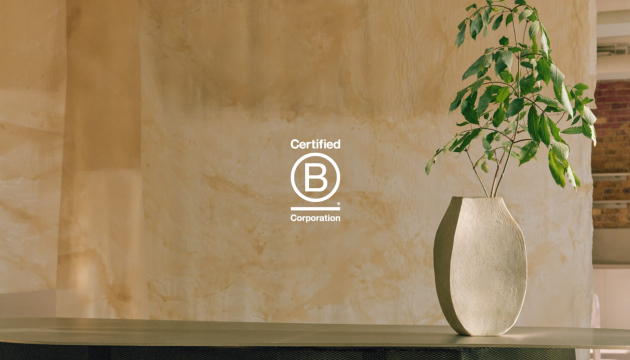
“Why do we need a 1930s working model for 2022?”
– Sarabajaya Kumar, Trustee, NCVO
This month, the NCVO (National Council for Voluntary Organisations) launched its flexible working report analysing benefits and barriers in the third sector. We’ve summarised the key points and offered our tips.
The problem of charity
The need for charity work is greater than ever. Meanwhile, resources and funds are more stretched than ever. Added to this, the charity sector routinely normalises overwork, and inherently views flexibility as more challenging.
Many employees are motivated by lived experience of the cause, making it even harder to switch off. For better or for worse, unpaid service is baked into the non-profit psyche.
Ambition is out of synch with resource.
The proof is in the numbers:
- There are 163,150 voluntary organisations in the UK
- 44% have an income of less than £10,000 and are unlikely to employ any paid staff
- 36% have an income of £10,000-£100,000
- 16% have an income of £100,000-£1m
- Just 4% have an income of over £1m
[Source: UK Civil Society Almanac 2021, NCVO]
According to the ONS, 3/5 of people working in the voluntary sector work in organisations with less than 50 employees.
Money is short, staff are stretched.
How can flexing help?
There are many benefits to championing flexible working. These include promoting deeper inclusion, accessing a wider talent pool, enhancing wellbeing, and focusing on productivity.
Remote working means it isn’t necessary for charity workforces to live in areas of high living cost or spend time and money on lengthy commutes. Talent is spread across the country; opportunities aren’t. Flexible working breaks down socioeconomic barriers.
Crucially, it helps to tackle the lack of diversity in the sector. It is the privileged who can work overtime with no notice, afford to live in London, or commute daily. Flexibility attracts more diverse talent.
A survey from March 2021 reveals 76% of charity professionals have not applied for a role because it didn’t offer enough flexibility; 62% have changed roles to gain more flexibility (#Jobshareswork survey of 298 charity sector professionals).
Moreover, the ONS shows that rates of sickness leave amongst remote workers is only 0.9% – compared to 2.2% for those with no flexible working.
When people can work on their own terms, they naturally feel more energised and motivated. Wellbeing and productivity are enhanced as the whole self is honoured. In turn, more can be given for the communities supported.
For overstretched charities, flexible arrangements incentivise workers, reduce personal pressures, and provide a massive levelling for wider candidates. This is indispensable for a sector built on social equity and compassion.
Where to start?
Disclaimer: No organisation will come up with something that works for everyone all the time. Flexible working, by its nature, is different for each organisation and individual.
The most important thing is to start somewhere. First steps:
- Start a conversation: keep it human and exchange ideas
- Grow a shared understanding of what good flexing looks like
- Build momentum: test and experiment new ideas
- Break down stigma and outdated ideas: advertise flexibility for all roles
- Build collective confidence
An important ground rule is for leaders to get to know and understand their workforce, while becoming a role model for good behaviours and boundaries. They must foster a mindset of empowerment and culture of trust.
Beyond WFH
WFH has become shorthand for flexible working. In fact, there are multiple forms of flexing: purposeful strategic choice should be behind each decision. Here are some examples:
- Part-time/ job share
- Flexi-TOIL (time off in lieu)
- Compressed hours
- Core hours/ staggered hours
- Commissioned outcomes
- Career break/ sabbatical
- Phased retirement
All considerations involve thinking differently and creatively about how we organise work and design roles. It is about co-designing a fully inclusive workplace culture – with smarter working at the crux.
Best practice for employers is to take a ‘reason neutral’ approach to decision-making when employees make a request. This means it should be judged primarily on its viability in a business sense, rather than the reason for requesting it.
Crucially, keep all agreements under review. If something doesn’t work, find a different flex.
Conclusion
To remain relevant, competitive, and attractive, flexible working is fundamental to the future of the voluntary sector. Charity employers should proactively consider how it is possible, adopting a default ‘yes to flex’ position.
Organisations must have the courage to start conversations, experiment, make mistakes, adjust, learn, and improve. In 2022, flexibility should be considered a central pillar of equity, diversity, inclusion, and wellbeing.
We have a colossal opportunity to change the rules. To embrace flexible, human-led working. The charity sector – built on social justice and compassion – must lead by example.
Flip it round. Rather than why should you offer flexible working: why shouldn’t you?
Featured Stories & Insights
 7th July 25
7th July 25
TSP Re-certified as a B Corp
LONDON, 7th July 2025 – TSP, a multi‑award‑winning investment and real‑estate asset manager headquartered in...
Read More 2nd July 25
2nd July 25
TSP CEO Zac Goodman Named Property Leader of the Year at Property Week Awards 2025
LONDON, 2nd July 2025 — TSP is proud to announce that CEO and founder Zac...
Read More 19th June 25
19th June 25
As Featured in: Flex and the City | How Zac Goodman made his mark in third sector property
TSP Founder and CEO Zac Goodman shares his remarkable journey. From analysing interest rates at...
Read More 17th June 25
17th June 25
TSP and NORNORM Collaborate to Redefine Office Spaces in London
LONDON, 17th June 2025 – TSP, a leader in property and community management, has announced...
Read More 12th June 25
12th June 25
6 Mistakes to Avoid in Property Maintenance
Property management and maintenance can be a seamless process. But small errors can quickly escalate...
Read More 9th June 25
9th June 25
5 Common ESG Requirements and How To Address Them
As ESG considerations become a driving force in business, organisations are under increasing pressure to...
Read MoreView all